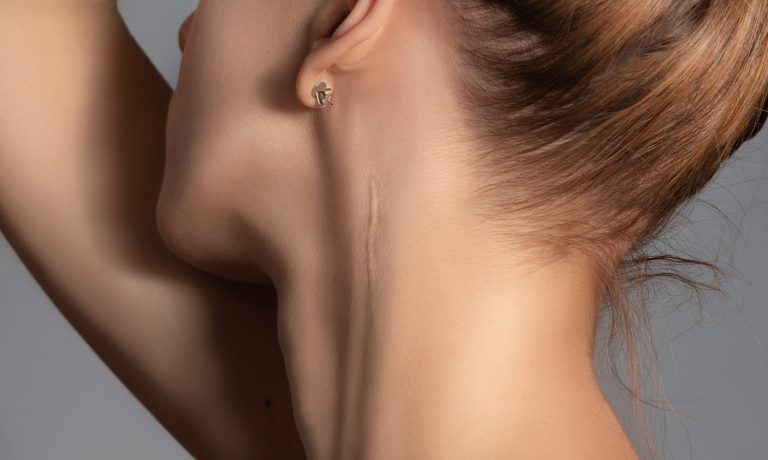
How lasers can improve the look of scars
We personalise scar treatments so we can get the most out of your skin and improve the look of scars by fading, evening and remodelling.
Dr Michael Rich is a specialist dermatologist who has been performing tumescent liposuction for over 30 years. Find out if Liposuction is suitable for you at ENRICH Clinic.
At ENRICH Clinic, we have a wide range of dermatological and cosmetic body treatments tailored to individual body and patient needs.
At ENRICH Clinic, our treatments are performed by our medical team consisting of doctors, nurses, and dermatologists and are tailored to each patient’s skin health needs.
ENRICH Clinic is committed to your skin health and well-being with a range of dermatological & cosmetic treatments tailored to the individual. Our treatments are performed by our medical team consisting of doctors, nurses, and dermatologists.
Skin health is essential for everyone. ENRICH Clinic has a wide range of technologies and dermatological solutions to help you achieve your skin care goals.
A large proportion of both women and men will develop stretch marks at some point in their lives. Puberty and pregnancy are the most common times for developing stretch marks, although they can also occur because of weight gain, muscle gain and from certain medical conditions.
Stretch marks, medically known as ‘striae’, are initially pink, red or purple streaks that often appear on the abdomen, breasts, upper arms, buttocks and thighs, and eventually fade to white or grey. Treatment can make stretch marks fade, but complete stretch mark removal is not possible – they are part of our skin’s structure. This doesn’t mean we can’t do anything about it; it just means we have limitations in place when reducing the appearance of stretch marks.
Although they may be a cosmetic concern, stretch marks are harmless and often fade over time. They do not require medical treatment. At ENRICH, we have several options available to assist with improving the appearance of stretch marks, including topical agents, lasers and other devices. Stretch mark removal, remember, is unlikely, but we certainly reduce the appearance of stretch marks. Each person is unique, and so are their stretch marks – pattern, placement type and reason for occurrence all play a part in choosing the right treatment for you.
Our Anti Stretch Mark Program
We have a stretch-mark solution for you. Our program uses all the latest and best stretch-mark altering treatments to fade and reduce the appearance of your stretch marks. It doesn’t matter if you have red, raised stretch marks, or white, older stretch marks; we will find the best way to help you feel more confident in your skin.
Contact us to arrange a consultation to discuss how we can treat your stretch marks.
We can work on your stretch marks and make them fade, become a more skin-coloured tone, or modify them so you – and others – notice them less. We can help promote clear, smooth skin anywhere on your body that a stretch mark appears.
We use a collection of stretch mark reduction treatments tailored for you. Your body is built slightly differently to everyone else’s, and therefore our treatment of your stretch marks will be unique to you.
Fresh pink stretch marks respond best to laser treatments or a mixture of radiofrequency and laser. The laser causes the blood vessels in the area to get rid of that pinky colour and make it a paler pink or skin coloured.
Radiofrequency is used in one of two ways: via a cannula (a tiny tube)/microneedle or heat. Microneedling with radiofrequency means getting deep into a stretch mark to ensure new collagen and elastin formation, while also remodelling the collagen that already exists. Radiofrequency from outside the skin causes the stretch mark to regenerate new collagen fibres.
Pink stretch marks that are relatively new to your body may take a few treatments to make a dent in, sometimes up to six or more. You’ll be back every two to four weeks, but each of you will have a different timetable for your stretch mark treatments.
You will have some redness after stretch mark treatments, and some gridding may appear on your skin for a week.
Stretch mark creams have never been found to have any real benefit besides providing moisturising, which skin needs (dry skin tears more easily), but that isn’t the thing that makes or breaks stretch marks. Stretch marks are on the dermal layer of skin (a deep layer), where creams can’t penetrate. Even if we could find the magical elixir for stretch marks, we’d have to find a way to get it that deep without damaging the top layers of skin.
What we do know is that retinoic acid works for some stretch marks. Retinoic acid used as a chemical peel and collagen stimulator. Retinoic acid is a prescription-only topical application that can help remodel collagen, but results do take some time.
These types of stretch marks are a bit harder to work with, since the collagen is very set in its ways, but that doesn’t stop successful treatment; it merely adds a layer of complexity. We use lasers and radiofrequency to treat older stretch marks too, but we use them a bit differently. Lasers are no longer pointed at the top of the skin, but underneath, to cause collagen and elastin production. The laser we use for older stretch marks is the Fraxel 1550.
The radiofrequency devices we prefer to use for stretch mark treatments are the ThermiRF and the Secret RF. Radiofrequency is used in the same way as for fresh pink stretch marks.
Women get stretch marks in different areas to men, but only because of the shape of a woman’s body and the lesser ability to build muscle compared to a man’s body. Women most often get stretch marks on their breasts, hips and thighs as these areas grow rapidly during puberty whether we like it or not. Even women with small breasts can get stretch marks, since it seems to be largely genetic and fast growth is fast growth. Some women will never have stretch marks, despite having large breasts that grew quickly – we can thank our relatives for that quirk of skin.
Stretch marks on the tummy after a pregnancy can be severe, due to the quick increase in size as the baby grows over the 9-10 months of pregnancy. Bigger babies don’t necessarily mean more stretch marks, and not everyone gets stretch marks. Stretch marks can cause pigmentation issues too. It would be wise to consider if your baby-growing days are over before seeking treatment for stretch marks, in case they recur.
Stretch mark treatments on delicate body parts like breasts can seem problematic, but it can bring a real sense of body confidence once the stretch marks are faded that is worth every cent. Stretched skin can also benefit from some non-invasive, quick, comfortable skin-tightening procedures as adjuncts to stretch mark treatments for great results.
Men tend to get stretch marks from putting on weight or muscle too quickly, but typically when they are a bit older than puberty. Boys’ bodies don’t expand in any one way too quickly at puberty, and in fact tend to stay more or less the same, but a larger version of their childhood selves. Shoulders broaden, but the belly, buttocks and thighs tend to stay proportional.
The only real area weight develops on teens and men in the abdomen, however, this rarely gets stretch marks since it is the one area of our bodies that are designed to quickly stretch out with food and digestive processes. This means men can get away with a lot more before a stretch mark will appear.
Men may see stretch marks on the backs of the knees, back, and even the biceps or other large muscles where we can build up muscle quickly, quicker than skin is able to stretch. Stretching skin means building new skin to accommodate the muscle, plus stretching, so it does take a bit of stitching and stretching power. When the stitches and stretches are not fast enough to accommodate the distance, a rip occurs, being filled in with collagen tissue – the faster repair job of the two – to patch the hole caused by tearing collagen and deeper layers of skin.
Avoiding stretch marks is key. Obviously, none of us gets to escape puberty and we can’t help how fast we grow, but we can control how fast we put on muscle or fat (generally). Checking yourself before you wreck yourself is key to avoiding stretch marks, or key to avoiding more stretch marks.
But how do you know your skin’s limits? Well, you don’t, but you could probably guess. Younger guys tend to bulk up faster than anyone over 40. Avoid pumping up an area that is already large, for example, if you have a big chest already, and think you want it bigger, try working on other areas too and think about aiming for a more well-rounded physique. Take your time building bulk, despite the temptation to rush into it just because you can. It can be really rewarding to see quick changes but remember: stretch marks are forever and you will not like them. What’s more, getting them treated can get expensive if you have a lot or they are severe.
You can generally afford a kilogram per week of weight change, but get specific advice for your body by your dermatologist and also ask around at training.
Your dermatologist has this array of skin tools that must be only used by physicians with the required expertise. Why? Because they are powerful. We have these cool lasers, strong creams, and other tools that are only for those with the skills, experience and training.
Altering deep layers of skin takes time, energy, and expertise, and not everyone responds the same, so you’ll need an expert eye and hand working on your skin.
Stretch marks bothering you?
We may have a stretch mark program for you.
Contact us
*Results may vary from person to person
"*" indicates required fields
*With all surgeries or procedures, there are risks. Consult your physician (GP) before undertaking any surgical or cosmetic procedure. Please read the consent forms carefully and be informed about every aspect of your treatment. Surgeries such as liposuction have a mandatory seven-day cooling-off period to give patients adequate time to be sure of their surgery choice. Results may also vary from person to person due to many factors, including the individual’s genetics, diet and exercise. Before and after photos are only relevant to the patient in the photo and do not necessarily reflect the results other patients may experience. Ask questions. Our team of dermatologists, doctors and nurses are here to help you with any of your queries. This page is not advice and is intended to be informational only. We endeavour to keep all our information up to date; however, this site is intended as a guide and not a definitive information portal or in any way constitutes medical advice.

We personalise scar treatments so we can get the most out of your skin and improve the look of scars by fading, evening and remodelling.

Stretch marks can be faded, smoothed and remodelled so as to be less obvious, using state-of-the-art cosmetic medical technology.

Skin needling with RF is a triple booster for your skin, getting deep to stimulate and remodel collagen and elastin for tighter, firmer skin.

We have a great range of skin tightening treatments so you can feel like yourself again after a pregnancy that left you with lax belly skin.
Subscribe to the ENRICH newsletter and receive latest news & updates from our team.
Enrich Clinic acknowledges the Traditional Lands of the Wurundjeri Woi Wurrung and Bunurong peoples of the East Kulin Nations on which we work and trade. We pay respect to their Elders past, present and emerging. We extend our acknowledgement and respect to the LGBTQIA+ community who we welcome and support. Read our full Acknowledgement Statement here
